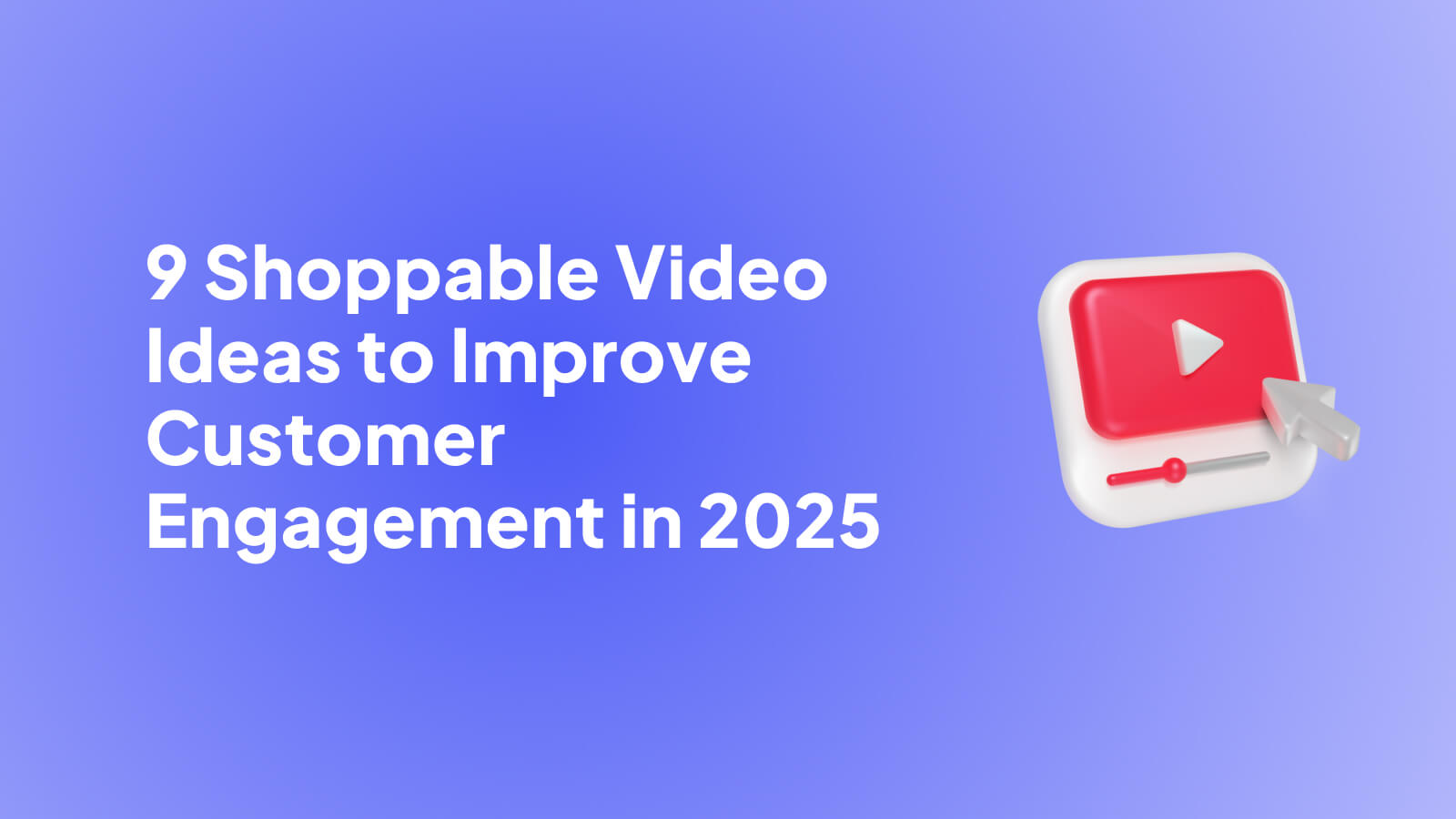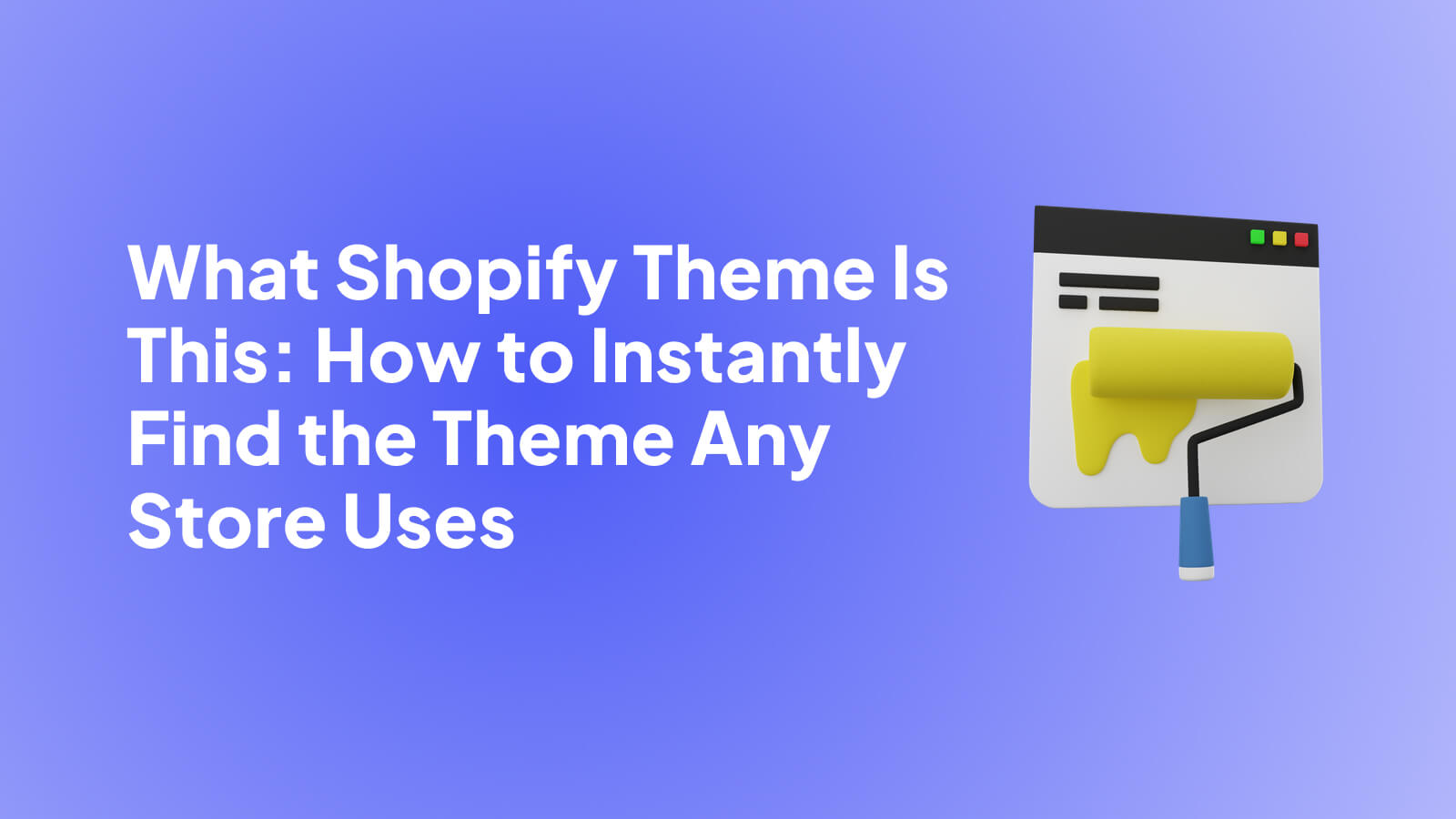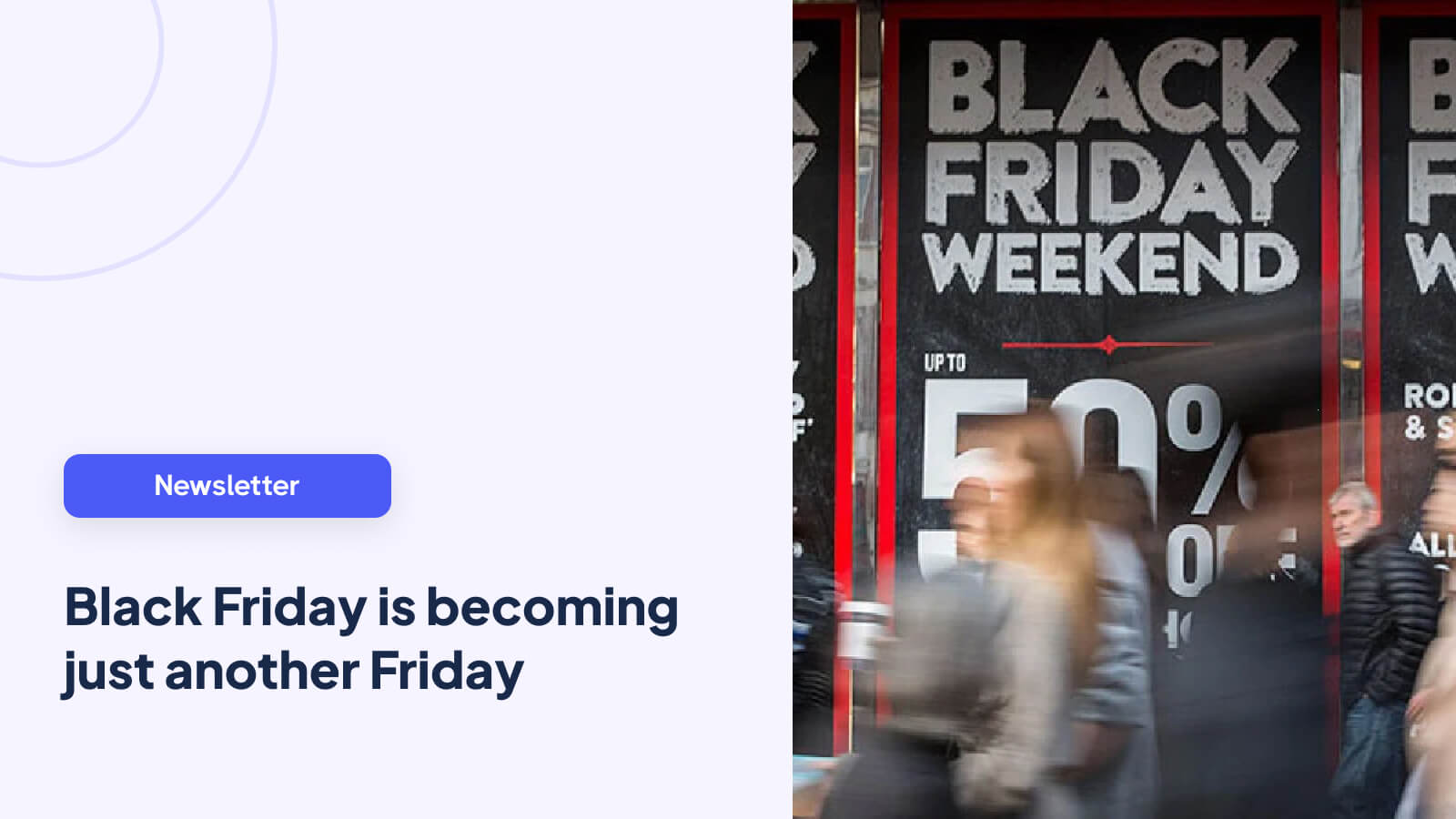
- 1. Personalization at Scale
- 2. Omnichannel Experience Strategy
- 3. Community Building and Social Engagement
- 4. Interactive Content and Gamification
- 5. Real-Time Customer Support and Chatbots
- 6. Value-Driven Content Marketing
- 7. Loyalty Programs and Reward Systems
- 8. Proactive Customer Outreach and Check-ins
- 9. Social Listening and Responsive Engagement
- 9 Strategies for Improving Customer Engagement
- From Views to Value: Making Engagement Your Competitive Edge
In the competitive world of e-commerce, a customer completing a purchase is no longer the final goal; it's the starting point. For Shopify merchants, the real challenge lies in transforming one-time buyers into a loyal community. This requires moving beyond transactional relationships and focusing on strategies designed to improve customer engagement at every touchpoint. A disengaged customer is easily lost to a competitor, but an engaged one becomes a brand advocate, drives repeat business, and provides invaluable feedback.
This article bypasses generic advice to deliver a curated list of specific, actionable strategies tailored for the Shopify ecosystem. You will discover practical methods to implement everything from scalable personalization and omnichannel experiences to effective community building and interactive content. We'll explore how to leverage real-time support, value-driven content marketing, and loyalty programs that genuinely resonate with your audience. Each point is designed to provide you with the tools and insights needed to foster deeper connections, boost customer lifetime value, and build a resilient brand that thrives on active participation. Forget passive browsing; it's time to create an interactive and memorable shopping journey that keeps customers coming back.
1. Personalization at Scale
Personalization at scale moves beyond simple "Hi [First Name]" emails. This strategy leverages customer data, AI, and machine learning to deliver truly individualized experiences across every touchpoint of your Shopify store. It's about tailoring product recommendations, content, and special offers based on a specific customer's browsing habits, purchase history, and demographic information. The goal is to make each shopper feel understood, which is a powerful way to improve customer engagement.

Think of how Netflix suggests shows you'll actually watch or how Spotify’s Discover Weekly playlist feels like it was curated just for you. For a Shopify merchant, this could mean using a shoppable video platform to display different user-generated content (UGC) videos to a first-time visitor versus a loyal, repeat customer. A new visitor might see a general "how-to" video, while the loyal customer sees a video featuring an accessory for a product they previously purchased.
How to Implement It
To effectively scale personalization, start small and build complexity over time. Begin by focusing on high-impact areas where personalization can make a significant difference.
- Start with Segmentation: Before individualizing, group your audience into segments. Common segments include new visitors, repeat customers, high AOV (Average Order Value) shoppers, and cart abandoners.
- Leverage Shopify Apps: Utilize apps that specialize in personalization. Tools like Rebuy or Dialogue use AI to power personalized product recommendations, smart carts, and post-purchase offers.
- Test and Optimize: Continuously run A/B tests on your personalization efforts. Does a personalized pop-up on the product page work better than a personalized banner on the homepage? Data will reveal what truly resonates with your audience.
2. Omnichannel Experience Strategy
An omnichannel experience strategy creates a unified and consistent customer journey across all your brand's touchpoints. It breaks down the silos between online, mobile, in-store, and customer service channels. This integrated approach ensures that a customer's interactions are seamless and contextual, regardless of how or where they choose to engage with your brand. The goal is to provide a single, cohesive experience that helps to improve customer engagement and build lasting loyalty.

Think of how Target allows you to browse on their mobile app, add an item to your cart, and then seamlessly switch to "in-store pickup" to complete the purchase. For a Shopify merchant, this could mean a customer seeing a shoppable video on Instagram, clicking through to your store, adding the item to their cart, and later receiving a targeted SMS message about a special offer to complete their purchase. Every step feels connected and intuitive, removing friction from the buying process.
How to Implement It
Building a true omnichannel experience requires careful planning and the right technology. Start by focusing on connecting your most critical customer channels before expanding.
- Map the Customer Journey: Identify every possible touchpoint a customer has with your brand, from social media discovery to post-purchase support. Understanding this flow reveals gaps and opportunities for integration.
- Invest in a Centralized Platform: Use a robust CRM or a customer data platform (CDP) to unify customer data from all channels. Shopify Plus often provides the foundation for this, but apps from partners like Salesforce or Adobe can create a more powerful, single customer view.
- Start with Key Connections: Don't try to connect everything at once. Begin with high-impact integrations like connecting your online store inventory with a physical pop-up shop or aligning your email marketing with your social media campaigns.
3. Community Building and Social Engagement
Community building and social engagement is the strategy of creating a dedicated space where customers can connect with your brand and each other. This moves beyond transactional relationships to foster genuine emotional connections and a strong sense of belonging. By cultivating a thriving community, you transform passive buyers into active participants and brand advocates, which is a highly effective way to improve customer engagement and build long-term loyalty.

Consider iconic examples like Peloton's interactive fitness community or Glossier's social media channels, which feel more like a conversation among friends than a corporate broadcast. For a Shopify store, this could involve creating a private Facebook group for verified customers to share tips or using a shoppable video gallery to showcase user-generated content (UGC) from your most passionate fans. The goal is to make customers feel like they are part of an exclusive club built around shared values and interests. You can learn more about why brands should build communities on moast.io.
How to Implement It
Building an authentic community requires a commitment to providing genuine value beyond just your products. It's a long-term investment that pays dividends in customer loyalty and advocacy.
- Create Exclusive Spaces: Establish a dedicated hub for your community, such as a private Slack channel, a Discord server, or a members-only section of your Shopify store. This creates a sense of exclusivity and provides a central place for interaction.
- Encourage User-Generated Content: Actively prompt and incentivize customers to share their experiences. Run contests, create unique hashtags, and feature customer videos and photos prominently on your site and social media channels.
- Engage Authentically: Be present and active within your community. Respond to comments, answer questions, and participate in discussions not as a corporation, but as a valued member. Authenticity is key to building trust.
4. Interactive Content and Gamification
Interactive content and gamification transform passive browsing into an active, enjoyable experience. This strategy integrates game-like mechanics such as challenges, rewards, and points into the customer journey to boost participation. By making shopping fun, you can significantly improve customer engagement, encourage repeat visits, and motivate specific actions, like making a purchase or sharing on social media. It shifts the focus from a purely transactional relationship to a more playful and memorable interaction with your brand.

Think of Starbucks Rewards, where collecting stars becomes a compelling mini-game, or Duolingo’s learning streaks that keep users coming back daily. For a Shopify store, this could manifest as a "spin-to-win" wheel offering discounts, a quiz to help customers find their perfect product, or a loyalty program where points unlock exclusive content or products. Incorporating these elements into shoppable videos can be particularly powerful; imagine a video where viewers can click to collect "hidden" discount codes or vote on the next product color.
How to Implement It
Successfully adding gamification requires a clear strategy that aligns with your business goals. The key is to make it feel like a natural and rewarding part of the shopping experience, not a gimmick.
- Align Mechanics with Objectives: Define what you want to achieve. If the goal is to increase email sign-ups, a "spin-to-win" pop-up is effective. If you want to boost repeat purchases, a points-based loyalty program with unlockable tiers is a better fit.
- Keep It Simple: The rules and rewards should be easy to understand. Complicated systems can frustrate users and defeat the purpose. A customer should immediately grasp how to participate and what they can gain. For a deeper dive, learn more about how to create interactive videos on moast.io.
- Refresh and Evolve: Keep your interactive elements fresh to maintain interest. Regularly update challenges, introduce new rewards, or launch seasonal competitions to give loyal customers a reason to stay engaged.
5. Real-Time Customer Support and Chatbots
Real-time customer support and chatbots offer immediate assistance to shoppers, answering questions and resolving issues the moment they arise. This strategy leverages AI-powered bots and live chat to provide instant, 24/7 support directly within your Shopify store. By eliminating wait times and offering on-demand help, you reduce friction in the buying journey and significantly improve customer engagement. The goal is to make support accessible and effortless, ensuring no customer is left with an unanswered question.
Think of how Sephora's chatbot provides quick beauty advice or how Domino's lets you order a pizza through a conversation. For a Shopify merchant, this could mean deploying a chatbot on a shoppable video. When a customer is watching a product demo and has a question about sizing or materials, they can ask the bot directly within the video player instead of navigating away to a separate FAQ or contact page, keeping them engaged and moving them closer to a purchase.
How to Implement It
Integrating real-time support can transform your customer service from a reactive cost center to a proactive engagement tool. Start by identifying the most common customer questions.
- Choose the Right Platform: Select a chat platform that integrates seamlessly with Shopify. Tools like Gorgias or Tidio are designed for e-commerce and combine live chat and chatbots to manage customer inquiries efficiently.
- Define Bot Responsibilities: Initially, program your chatbot to handle frequent, simple queries like "Where is my order?" or "What is your return policy?". This frees up human agents to handle more complex issues. Clearly set expectations so users know they are interacting with a bot.
- Provide an Escalation Path: Always offer a clear and easy way for customers to connect with a human agent if the chatbot cannot resolve their issue. A frustrating bot experience can do more harm than good, so a seamless handoff is critical to maintain a positive experience and improve customer engagement.
6. Value-Driven Content Marketing
Value-driven content marketing is a strategic approach that prioritizes creating and sharing content that is genuinely useful, relevant, and valuable to your target audience. Instead of constantly pushing products, this method focuses on solving customer problems, answering their questions, and establishing your brand as a trusted authority in your niche. This builds a strong, long-term relationship, which is a cornerstone to improve customer engagement and foster loyalty.
This strategy moves the focus from "what can we sell?" to "how can we help?". Think of how HubSpot offers extensive free educational resources on marketing or how Patagonia creates powerful content around environmental activism. For a Shopify merchant selling skincare, this could mean creating shoppable video tutorials on "How to Build a Morning Skincare Routine" or "5 Ingredients to Avoid for Sensitive Skin." The content provides immediate value, with the product being a natural part of the solution rather than a hard sell.
How to Implement It
Successfully implementing value-driven content requires a deep understanding of your customer's needs and a commitment to quality over pure promotion.
- Solve Customer Problems: Use customer feedback, keyword research, and social listening to identify your audience's biggest pain points and questions. Build your content strategy around providing the answers and solutions they are actively searching for.
- Maintain Consistency: Establish a regular content schedule. Whether it's a weekly tutorial video or a bi-weekly blog post, consistency keeps your audience engaged and signals that you are a reliable source of information.
- Repurpose Across Channels: Maximize the reach of your valuable content. Turn a long-form blog post into a series of short, shoppable video tips for Instagram Reels and TikTok. Create an infographic from a "how-to" guide to share on Pinterest. This ensures your value reaches customers on their preferred platforms.
7. Loyalty Programs and Reward Systems
Loyalty programs and reward systems are structured incentives designed to encourage repeat business. By offering exclusive benefits, discounts, or points for purchases, these programs give customers a compelling reason to return to your Shopify store instead of turning to a competitor. They transform transactional relationships into long-term, emotional connections, which is a cornerstone strategy to improve customer engagement and increase customer lifetime value.
Think of iconic examples like Sephora's Beauty Insider, which uses a tiered system to offer escalating rewards, or Starbucks Rewards, which seamlessly integrates rewards into its mobile app experience. For a Shopify store, this could mean creating a points-based system where customers earn "credits" for purchases, social media follows, and reviews. These credits can then be redeemed for discounts, free products, or exclusive access to new collections, making customers feel like valued insiders.
How to Implement It
A successful loyalty program should be simple to understand and feel genuinely rewarding. The key is to reduce friction and clearly communicate the value to members.
- Make It Simple and Transparent: Ensure customers can easily understand how to earn and redeem rewards. Complicated rules create barriers. A clear "1 point for every $1 spent" system is far more effective than a convoluted one.
- Utilize Shopify Loyalty Apps: Integrate powerful apps to manage your program. Tools like Smile.io or Yotpo Loyalty & Rewards make it easy to set up points, referrals, and VIP tiers directly within your Shopify ecosystem. As brands like PetSmart have shown, adapting loyalty programs for new generations is key to sustained success. You can learn more about evolving loyalty strategies from PetSmart's program revamp.
- Personalize the Rewards: Use customer data to offer rewards that align with their past purchases and preferences. If a customer frequently buys a specific type of product, offer them early access or a special discount on a new item in that category.
8. Proactive Customer Outreach and Check-ins
Proactive customer outreach flips the traditional support model on its head. Instead of waiting for a customer to report a problem or ask a question, this strategy involves reaching out to them first. It's about anticipating needs, ensuring they are satisfied with their purchase, and identifying opportunities to provide additional value. This approach shows customers you care about their experience beyond the initial transaction, which is a powerful way to improve customer engagement and foster long-term loyalty.
This shift from a reactive to a proactive stance can prevent small issues from becoming major frustrations. For a Shopify merchant, this could be an automated email checking in a week after an order is delivered, asking if the customer is happy with their product and offering tips on how to use it. Companies like Salesforce and HubSpot have built their success on this model through their customer success management, ensuring clients get the most value out of their services.
How to Implement It
Implementing a proactive outreach strategy requires a thoughtful approach that prioritizes genuine value over just making contact. The goal is to be helpful, not intrusive.
- Time Your Outreach with Data: Use customer data to determine the perfect moment to reach out. For example, if you sell a consumable product like coffee, send a reminder to reorder a few days before their initial supply is likely to run out.
- Provide Genuine Value: Every interaction should offer something useful. This could be a "how-to" video guide, a special discount on a complementary product, or early access to a new collection. The key is to make the customer feel like they are gaining something from the interaction. Learn more about how to leverage customer interactions on moast.io.
- Balance Automation and Human Touch: Use automation for simple check-ins, like a post-purchase follow-up. However, empower your customer service team to conduct personal outreach for high-value customers or to resolve potential issues flagged by your system. A personal phone call or video message can have a massive impact.
9. Social Listening and Responsive Engagement
Social listening is the proactive strategy of monitoring digital conversations to understand what customers are saying about your brand, competitors, and industry online. This goes beyond just tracking mentions; it involves analyzing these conversations to gain actionable insights and then engaging directly. By actively participating in real-time discussions on social media, review sites, and forums, you can address concerns, celebrate positive feedback, and humanize your brand, which is a powerful way to improve customer engagement.
Consider how Wendy's built a massive following through witty and responsive Twitter engagement or how JetBlue uses social media for proactive customer service. For a Shopify store, this could mean finding a customer on Instagram asking for recommendations for a product like yours. You could respond with a helpful tip and link them to a shoppable video demonstrating exactly what they're looking for. This turns a passive mention into a direct, helpful, and potentially revenue-generating interaction.
How to Implement It
Effective social listening requires the right tools and a clear strategy for response. Start by defining what you want to achieve, whether it’s customer service, lead generation, or market research.
- Use Social Listening Tools: Implement tools designed to monitor online conversations. Platforms like Hootsuite or Sprout Social help you track keywords, brand mentions, and competitor activity across multiple channels, so you never miss an opportunity to engage.
- Establish a Response Protocol: Define your brand voice and create guidelines for how your team should respond. Decide which types of comments require a public reply versus a private message, and ensure your responses are consistently quick, empathetic, and helpful.
- Turn Insights into Action: Don't just respond; analyze the data you collect. If you notice a recurring complaint or question, use that insight to improve your products, update your FAQ page, or create a new shoppable "how-to" video addressing the common issue.
9 Strategies for Improving Customer Engagement

From Views to Value: Making Engagement Your Competitive Edge
The journey to improve customer engagement is not a destination; it's an ongoing commitment to understanding, valuing, and connecting with the people who choose your brand. Throughout this guide, we've explored a powerful arsenal of strategies, moving far beyond generic advice to provide a concrete roadmap for Shopify merchants. We've seen that genuine engagement isn't about fleeting interactions but about building a durable, reciprocal relationship with your audience.
From harnessing the precision of personalization at scale to creating a seamless omnichannel experience, the core principle remains the same: meet your customers where they are with the value they seek. Building a vibrant community and deploying interactive content transforms passive browsing into active participation. This proactive stance is the cornerstone of modern e-commerce success. It shifts the dynamic from a simple transaction to a meaningful conversation, fostering a sense of belonging and loyalty that price cuts alone can never replicate.
Your Actionable Blueprint for Enhanced Engagement
To translate these insights into tangible results, it’s crucial to move from reading to doing. The most effective way to improve customer engagement is to start small, measure your impact, and scale what works. Don’t feel pressured to implement all nine strategies at once. Instead, identify the areas with the most significant potential for your specific brand and customer base.
Consider these immediate next steps:
- Audit Your Current Engagement: Where are your customers most active? Where are the drop-off points in their journey? Use this data to prioritize your efforts. For instance, if you have a strong social media following but low on-site interaction, focusing on interactive content or a value-driven content marketing strategy could be your first move.
- Select One or Two Strategies to Pilot: Choose a primary and a secondary strategy to test. You might launch a simple tiered loyalty program while simultaneously implementing a social listening tool to better understand customer sentiment. This focused approach allows you to dedicate resources effectively and measure ROI accurately.
- Set Clear, Measurable Goals: Define what success looks like. Is it a 15% increase in repeat purchase rate? A 20% rise in user-generated content submissions? A 10% reduction in support ticket response times via real-time chat? Clear KPIs are essential for tracking progress and demonstrating the value of your initiatives.
Ultimately, mastering these approaches is about future-proofing your business. In an increasingly crowded digital marketplace, the brands that thrive will be those that create an ecosystem around their products, one built on trust, value, and authentic human connection. By making a deliberate effort to improve customer engagement, you're not just selling a product; you're building a brand that customers are proud to be a part of, advocate for, and return to time and time again.
Ready to supercharge your product pages and turn passive viewers into active shoppers? Moast empowers Shopify merchants to add shoppable, user-generated, and interactive videos directly to their stores, making it easier than ever to implement the engagement strategies discussed in this article. Explore how you can boost conversions and build a more connected customer experience today at Moast.
Related content
Turn your videos into sales
Boost conversions by up to 30% by turning your existing TikToks and Reels into shoppable videos directly on your Shopify store.












